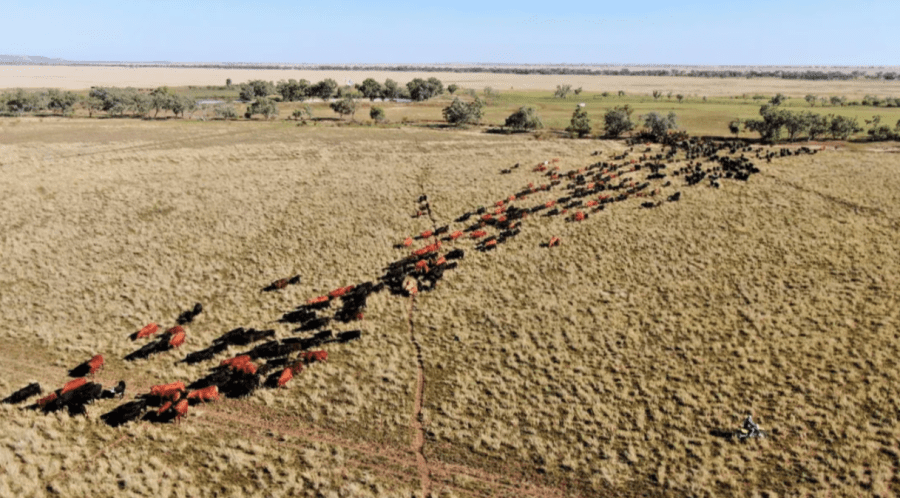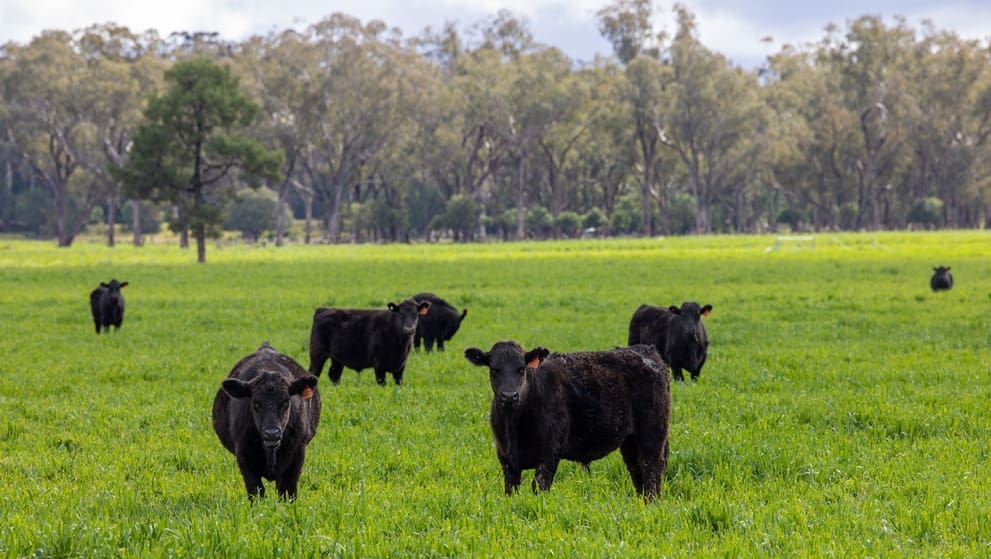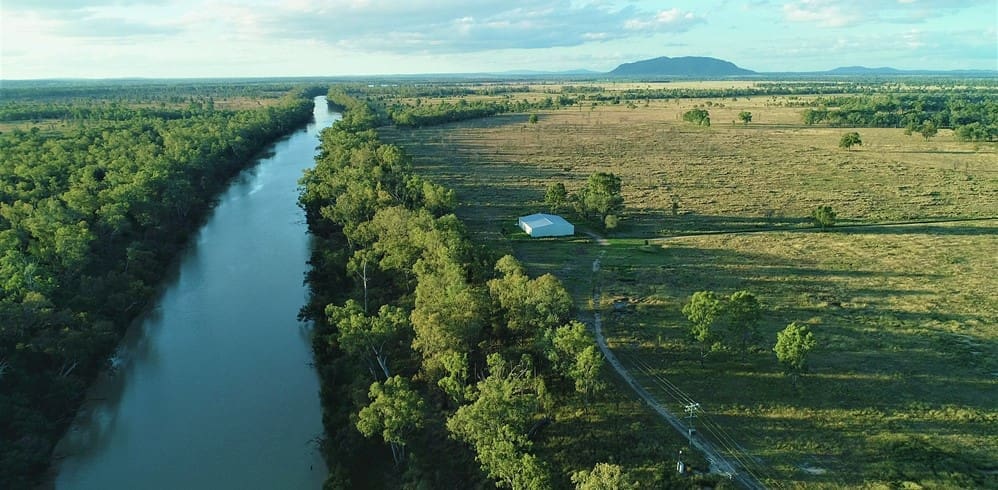
In December, the 77,747ha Baratria Aggregation in northwest Queensland was split up and sold to three family-owned pastoral businesses, including a neighbour.
BIGGER is usually better in the cattle property market, but there is a large number of reasons why smaller can be sweeter for some operators.
Twenty to 30 years ago, there was a trend towards aggregating smaller parcels of grazing country into larger portfolios.
This week’s property review looks at five recent reversals of that trend and who is buying.
Liverpool Plains Portfolio, northern New South Wales
CBRE Agribusiness managing director David Goodfellow said the reason some larger portfolios are being split up is because individual producers have the capacity to compete in the market.
“Since the breaking of the drought, there have been three successive good seasons and strong commodity prices giving cashed-up families the ability to actively compete against the corporates and big institutions, for the right parcel of land.”
Mr Goodfellow said one of the greatest stories of 2022 was the $120 million sale of a massive north-western New South Wales portfolio of land once earmarked for a coal mine, to a gallery of buyers.
“The vendor, Shenhua Coal, was willing to split up its aggregation into various parcels so both the family farming and the corporate sectors could participate in acquiring the prime land located in the sought-after Liverpool Plains,” Mr Goodfellow said.
While the Chinese vendor was keen to get a deal done so it could pack up its business, it also understood the best course of action for the local community and ultimately its brand was to sell parcels of country to farming families.
“Shenhua Coal didn’t take the first big price that came along. It was willing to go through the process of negotiating with local producers. While the corporates and family farmers were given an equal opportunity to compete, ultimately the locals successfully outbid the corporates.”
Mr Goodfellow said almost all of the transactions were to families who had neighbouring land.
“They were able to pay a small premium and make a good return because it was an extension of their existing businesses.”
Ultimately, Gunn Agri purchased almost half of the Breeza Aggregation, with the remainder and those blocks held at Tambar Springs and at Barraba being sold to local families.
One of those, the Warmoll family from Breeza, together with their business Jack’s Creek Beef, purchased 3000ha of grazing land for circa $26 million.
Interestingly, in each of those family transactions, Mr Goodfellow said it wasn’t mum and dad buying additional land to make their enterprise bigger and more profitable. It was setting up their families for another generation.

Cattle on the Breeza aggregation
THF Portfolio, Central Queensland
In August 2021, five separate Queensland-based family and corporate buyers paid a combined $100 million for the 21,900ha THF beef cattle and irrigated fodder portfolio in Central Queensland’s Fitzroy Basin.
Four family-owned local operators purchased four non-contiguous properties in Baralaba, Moura and Bluff (near Blackwater). Large-scale investor Rural Funds Management secured another property, the 1917ha The Pocket at Gogango for $13.8 million (including a 5364MgL water allocation).
RFM owns the neighbouring 7600ha breeding and backgrounding cattle property Comanche where it is planting higher value nut trees.
Ben Craw from Sydney-based Oxley Capital Partners who offered the diverse aggregation as a whole or individually said there was appetite for the portfolio collectively, as a combination, and also from offshore bidders.
“The overwhelming majority of interest came from domestic bidders chasing grass and economies of scale.”
Mr Craw said it was important to understand the depth of the market and to explore all the marketing options.
“Identify the competing forces of local strategic operations versus capital (domestic, offshore and institutional) and once the right segments have been targeted, determine how best to position that asset.”
He said in some cases, a vendor might seek to sell an asset in one line because it was more straightforward, but it narrowed the field, particularly for larger aggregations.
“That is why, in certain circumstances, an expressions of interest campaign works well because multiple segments of the market can be targeted.”
Mr Craw said moves to pull-apart larger horticulture or irrigation portfolios might not be in the best interest of the vendor.
“In some cases, the real value is keeping the ‘jewel’ (water entitlements or the cash flow element) of that operation. Breaking up the economies of scale could work backwards for some sales.”
Mr Craw said given the current strength and depth of the market, large grazing portfolios were more often being de-aggregated, resulting in a better price for the vendor.
“In the case of the THF Portfolio, we identified a number of large local family operators chasing grass and economies of scale. Ultimately, they paid a strong value for the individual properties.”

THF portfolio
Baratria, western Queensland
In December, the 77,747ha north-west Queensland Baratria Aggregation was split up and sold to three family-owned pastoral businesses, including a neighbour.
At the beginning of the marketing program, Tom Brodie from Brodie Agencies predicted the strength would come down to two or three buyers who would secure the aggregation in individual parcels, rather than in one line.
Mr Brodie said the end result was in line with family farm enterprises expanding their existing holdings.
“While the bigger operators or the corporates are capable of buying entire aggregations, there is a greater opportunity for two or three families to pay a premium for an individual parcel of country.”
Mr Brodie said times had changed and many producers were chasing country elsewhere.
“Once upon a time, neighbours would secure adjoining country. However, better transport and communication means producers can buy and manage places in different regions.”
He said many producers did not want to put all their eggs in one basket.
“Some want higher rainfall or places well located to southern markets. In the case of Baratria, two of the three purchasers were seeking open downs country to grow, finish and background – to complement their existing breeding operations.”
Saltbush Aggregation, South Australia
In South Australia’s productive mid-north region, five local family farming businesses paid in excess of $33 million for the 2852ha Saltbush Aggregation.
Geoff Schell from Ray White Rural said large portfolios were rare, especially in the mixed farming areas.
“The Saltbush Aggregation was marketed nationally and received very good inquiry, but only a handful of prospective buyers looked at the property as a whole.”
“The strongest interest by far came from individual local farm families chasing country for family members, and this resulted in a better price for the vendor,” he said.
Mr Schell said given the current strength of the market, more than 90 percent of vendors in his region were farm families who were selling (retirement or relocating) and farm families farms who are expanding (with second and sometimes other generations returning home).
Heavin Farms, southern New South Wales
In July 2020, three separate buyers secured four Murrumbidgee River frontage properties owned by Texans Diane and Gary Heavin, the co-founders of the fitness franchise company, Curves.
Combined, the properties boasted a 14km frontage to the Murrumbidgee River and 3682ha of productive and well-managed country in south western New South Wales.
David Nolan from Webster Nolan said existing landholders were trying to secure more country to grow their businesses.
“In most cases, the way to maximise value for the vendor is to break up these aggregations. Selling Heavin Farms as three separate parcels attracted a greater number of prospective buyers.”
However, Mr Nolan said each individual aggregation was unique and every seller was different.
“Some vendors might want the entire portfolio sold in one line – big can be beautiful and size and scale can also attract a premium,” he said.
